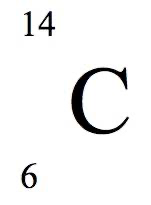
Isotopes and Ions
Atoms- the base unit of any element, smallest piece of an element that still has the qualities of the element
Electrons- negatively charged particle that orbits the nucleus of an atom
Protons- positively charged particle located in the nucleus of an atom
Ions- charged atoms
Cations- positively charged atoms/ions
lost electrons (more protons than electrons meaning more positive charges)
Anions- negatively charged atoms/ions
gained electrons (more electrons than protons meaning more negative charges)
Atoms can lose/gain electrons only in chemical reactions when it steals an electron from/an electron is stolen by another atom/ion
Neutrons- have a neutral charge and make up the nucleus with the protons
all elements have neutrons except hydrogen since it only has one proton
elements can vary in amounts of protons
amount of neutrons effects the atoms atomic mass
Mass number: the amount of protons + neutrons in an atom
Isotopes: atoms of the same element that have different numbers of neutrons
each has different atomic mass depending on the amount of neutrons
does not affect how the element chemically reacts
Atomic mass: how much stuff in the atom measured in amu
weighted average of the atomic mass of each isotope of that element
To find average atomic mass:
relative atomic mass of 1 isotope x percent abundance = weighted score
do this for each isotope, then add the weighted scores to get the atomic mass
Example:
Isotope | Mass (mass number if don’t have actual mass) | Percent Abundance | Weighted Score |
|---|---|---|---|
Carbon - 12 | 12 | 98.89 | 11.87 |
Carbon - 13 | 13 | 1.11 | 0.14 |
Carbon - 14 | 14 | 0.01 | 0.00 |
Atomic Mass of Carbon: | 12.01 |
How to write isotopes:
element name - mass number
Element symbol:
mass number
atomic number
element symbol
Carbon- 14 symbol:

Isotopes and Ions
Atoms- the base unit of any element, smallest piece of an element that still has the qualities of the element
Electrons- negatively charged particle that orbits the nucleus of an atom
Protons- positively charged particle located in the nucleus of an atom
Ions- charged atoms
Cations- positively charged atoms/ions
lost electrons (more protons than electrons meaning more positive charges)
Anions- negatively charged atoms/ions
gained electrons (more electrons than protons meaning more negative charges)
Atoms can lose/gain electrons only in chemical reactions when it steals an electron from/an electron is stolen by another atom/ion
Neutrons- have a neutral charge and make up the nucleus with the protons
all elements have neutrons except hydrogen since it only has one proton
elements can vary in amounts of protons
amount of neutrons effects the atoms atomic mass
Mass number: the amount of protons + neutrons in an atom
Isotopes: atoms of the same element that have different numbers of neutrons
each has different atomic mass depending on the amount of neutrons
does not affect how the element chemically reacts
Atomic mass: how much stuff in the atom measured in amu
weighted average of the atomic mass of each isotope of that element
To find average atomic mass:
relative atomic mass of 1 isotope x percent abundance = weighted score
do this for each isotope, then add the weighted scores to get the atomic mass
Example:
Isotope | Mass (mass number if don’t have actual mass) | Percent Abundance | Weighted Score |
|---|---|---|---|
Carbon - 12 | 12 | 98.89 | 11.87 |
Carbon - 13 | 13 | 1.11 | 0.14 |
Carbon - 14 | 14 | 0.01 | 0.00 |
Atomic Mass of Carbon: | 12.01 |
How to write isotopes:
element name - mass number
Element symbol:
mass number
atomic number
element symbol
Carbon- 14 symbol:

 Knowt
Knowt